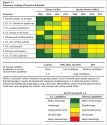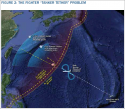Brumby
Major
There are a couple of studies done by the RAND corporation, a recent one being last year that outlined the continuing decline in the US's ability to maintain dominance. Specific scenarios of simulation were around a Taiwan straits conflict and in the SCS.hopefully we all noticed, in for example https://www.sinodefenceforum.com/f-22-raptor-thread.t6557/page-75#post-400415: it's anybody's guess what's inside of the classified version, anyway
(I'm sorry for repeating myself) my point is we're approximately in the middle now between when New Generation Aircraft projects started (around 2000) and when the benefits of investing half of a trillion will be reaped (after 2030)

The main problem for the US which was highlighted by an even earlier RAND study in 2008 is simply the logistics and distance in impacting sortie rates generation under such conflict scenarios. The ever increasing numbers of ballistics missiles, longer range cruise missiles and the potential availability of J-20's in numbers by 2030, it increases the difficulties of maintaining dominance. Specifically I believe the J-20 are designed to penetrate and target refuelling tankers in any potential conflicts. The main problem of F-22/F-35 when operating in the Western Pacific is their short legged capabilities in relative terms to the operating distance.
The chart below shows the refueling tankers required for sortie generation


I would believe the recent USAF 2030 study are meant to address some of these challenges by way of new technologies and concepts. We will have to be patient in determining what those ideas might look like.


